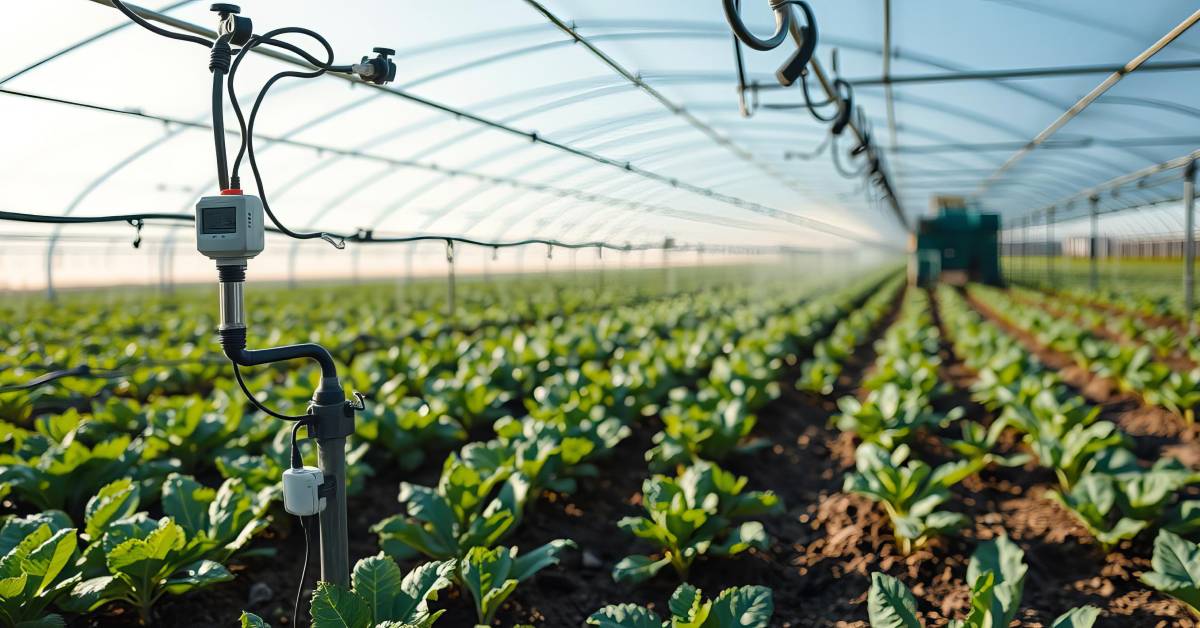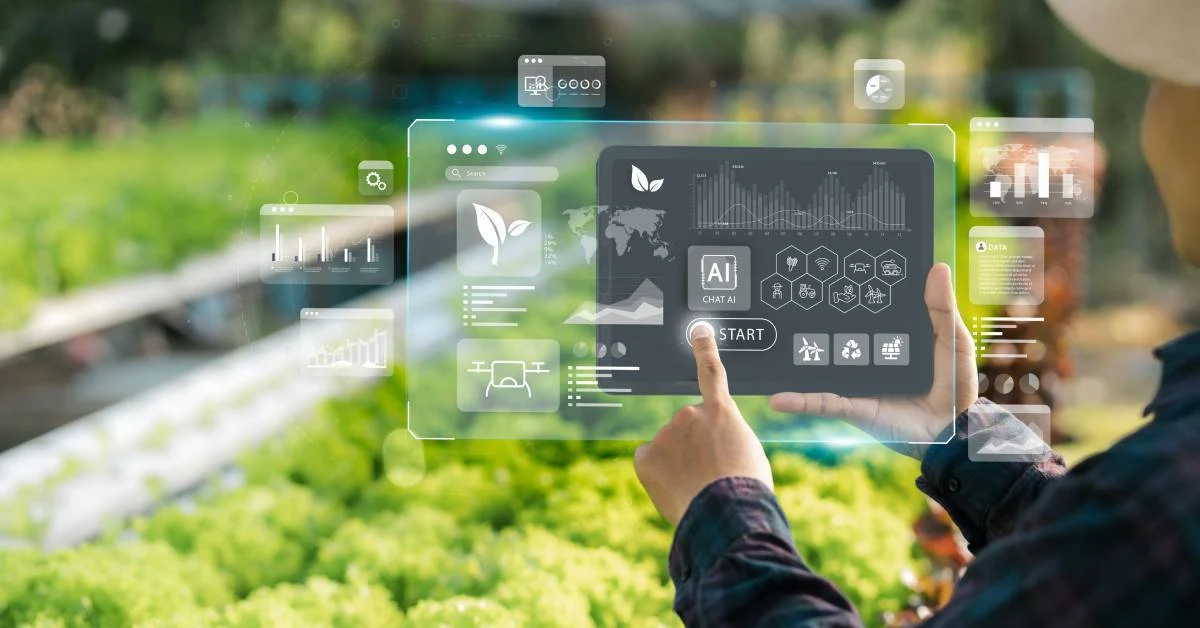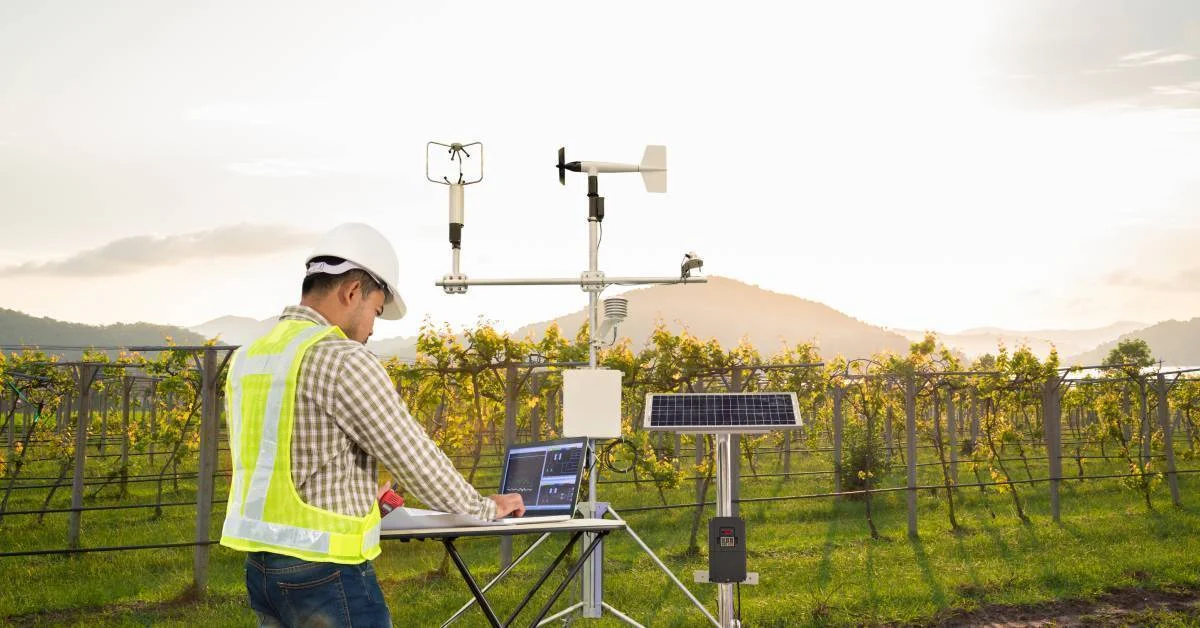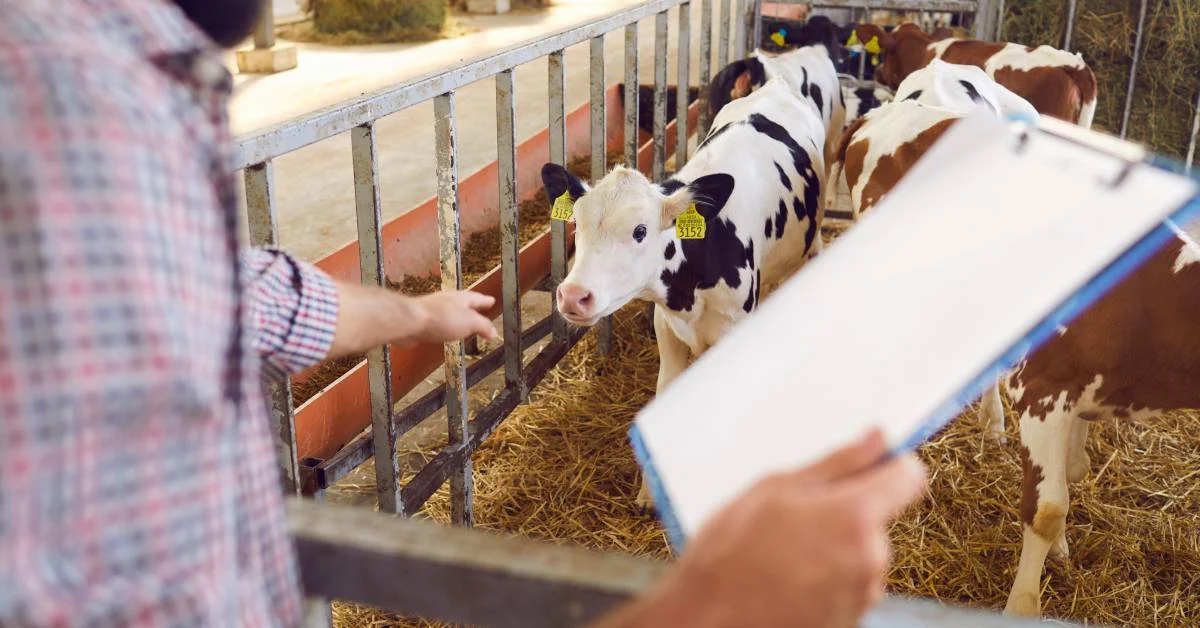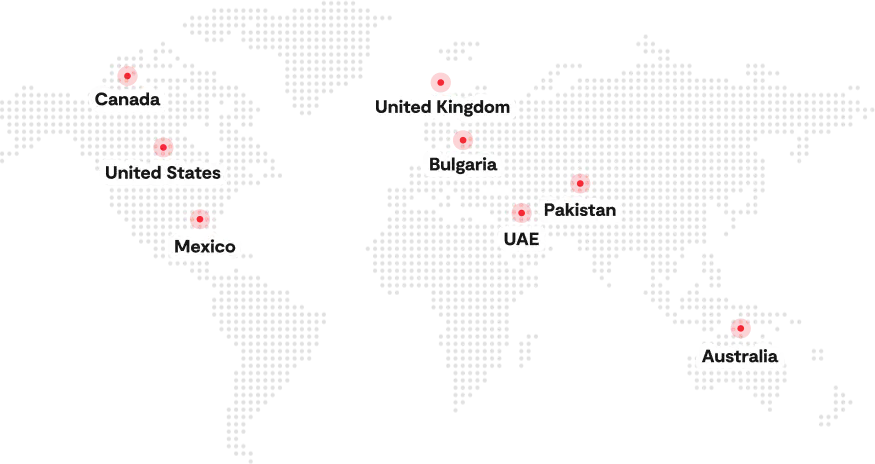Greenhouse farming today is no longer just about shielding crops from unpredictable weather. It’s about building intelligent, responsive systems that can adapt, learn, and deliver consistent results. This shift is driven by greenhouse integrations and AI-powered monitoring tools that give growers full control over their environment. The global AI in agriculture market size was valued at USD 2.18 Billion in 2024. Looking forward, IMARC Group estimates the market to reach USD 12.95 Billion by 2033, exhibiting a CAGR of 19.48% during 2025-2033.
These technologies help automate everything from temperature and humidity control to irrigation, nutrient delivery, and crop health tracking. More importantly, they give producers the ability to make fast, informed decisions based on real-time data. Whether you’re managing one greenhouse or scaling a network across locations, greenhouse integrations are the core of what keeps operations efficient and secure.
In this blog, we’ll take a closer look at the role of greenhouse integrations, what AI brings to the table, and why monitoring tools are now indispensable for controlled environment agriculture. We’ll also show how Folio3 AgTech addresses these challenges so you can overcome complexity and grow smarter from day one.
The Role of Greenhouse Integrations in Modern Agriculture
Greenhouse integrations in operations, is the seamless linking of hardware (sensors, controllers) and software (management platforms, analytics engines) so that data and commands flow automatically between systems. These greenhouse integrations are at the core of modern, data-driven agriculture. They connect systems, devices, and software to help farmers manage every part of the greenhouse environment with greater speed, accuracy, and consistency.
What Greenhouse Integrations Do:
- Connect environmental sensors with software platforms for real-time monitoring
- Unify climate control, crop irrigation systems, lighting, and nutrient systems under one dashboard
- Enable automation of routine tasks like misting, heating, and shading
- Support remote access to live data, alerts, and system settings
- Provide traceability across production stages for better compliance and audits
Why They Matter:
- Save time by automating manual processes
- Improve decision-making with centralized, real-time data
- Reduce waste of water, energy, and fertilizer
- Maintain consistent crop conditions across multiple greenhouses
- Scale operations easily without loss of control
Did you know❓
North America currently dominates the AI in agriculture market, holding a significant market share of over 36.8% in 2024, driven by the increasing need for precision agriculture techniques to enhance crop yield, and the growing adoption of IoT devices and sensors for data-driven farming practices.
Types of Greenhouse Integrations and Their Use Cases
Greenhouse integrations vary in function, but they all work toward the same goal: smarter, more secure, and more productive farming. While hardware like fans or pumps has long been a part of greenhouse integrations, the real transformation comes from digital, software-based, and AI-powered systems. Below are the core types of greenhouse integrations used in modern greenhouse operations.
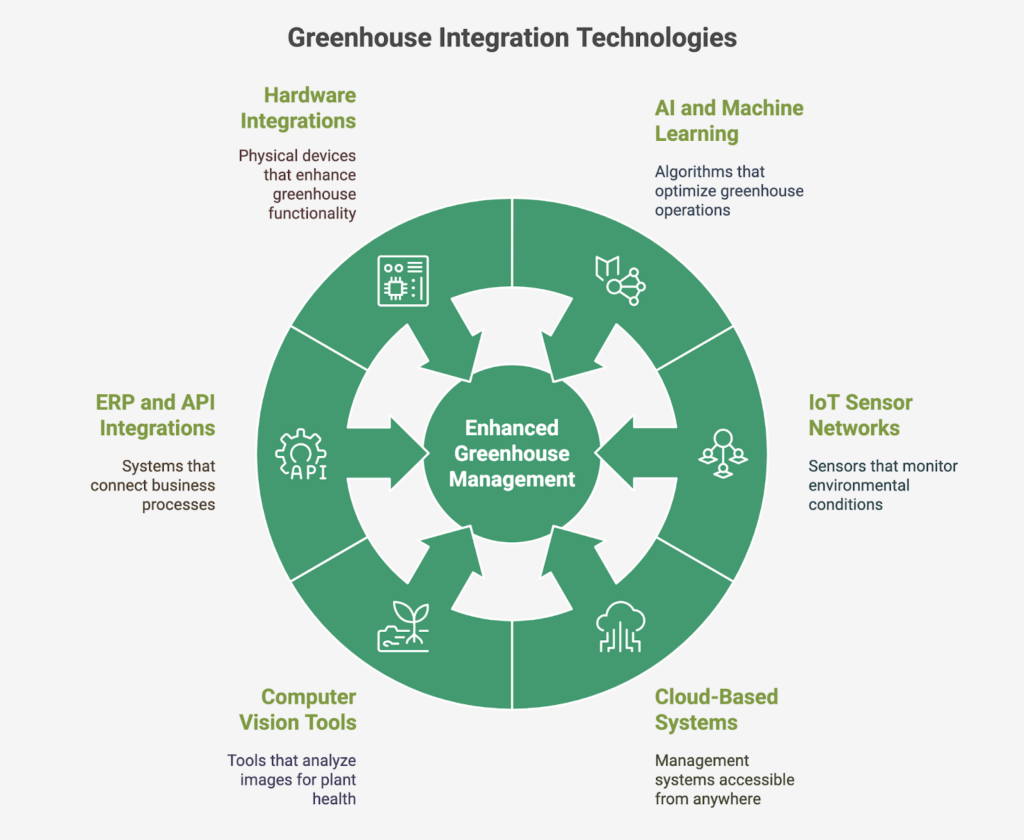
1. AI and Machine Learning Algorithms
These tools make greenhouses more responsive and intelligent. They help:
- Predict ideal harvest windows by analyzing plant growth data
- Adjust climate settings automatically based on historical trends
- Trigger alerts for anomalies like sudden temperature spikes
- Recommend irrigation or nutrient changes based on yield goals
Use Case: AI tools forecast optimal planting and harvesting dates, reducing waste and maximizing revenue.
2. IoT Sensor Networks
Internet of Things (IoT) devices gather critical environmental data, including:
- Temperature and humidity
- Soil moisture and pH levels
- CO₂ concentrations and light exposure
Use Case: In precision agriculture, sensors feed data into centralized dashboards, allowing growers to respond immediately when conditions deviate from the norm.
3. Cloud-Based Management Systems
These platforms bring together data from sensors, machines, and software tools in one place. They allow:
- Remote access to greenhouse controls
- Cross-location monitoring for multiple farms
- Historical data analysis for long-term planning
Use Case: A grower managing five greenhouses across different regions can use one dashboard to monitor and adjust systems from anywhere.
4. Computer Vision and Imaging Tools
High-resolution cameras and AI analyze plant growth and health. They can:
- Detect diseases and pests early
- Track leaf size, color, and formation
- Automate classification of crops ready for harvest
Use Case: Computer vision systems flag signs of mold or leaf blight before they become visible to the human eye.
5. ERP and API Integrations
Enterprise software platforms help synchronize greenhouse integrations and operations with:
- Inventory management
- Logistics and delivery tracking
- Sales and order processing
Use Case: When integrated with an ERP, a grower can see which crops are ready, how much is in stock, and where deliveries need to go, all in real time.
6. Hardware Integrations
Although not the main focus here, hardware still plays a role. Common examples include:
- HVAC systems for temperature control
- Automated irrigation units
- Light sensors and shading controls
These devices are increasingly integrated with software systems for better coordination and responsiveness.
Benefits of Greenhouse Monitoring
Smart greenhouse integrations do more than just automate. They enable a completely new level of control, accuracy, and productivity. As agriculture becomes more data-driven, greenhouse integrations and monitoring are proving essential for growers who want to stay competitive and adapt sustainable practices in agriculture.
These systems allow producers to track and manage every aspect of their growing environment from a central platform. Whether it’s temperature control, nutrient dosing, or real-time pest alerts, having access to consistent and actionable data transforms decision-making at every level. The following are some of the most valuable benefits that growers can achieve through greenhouse integrations and monitoring digital systems:
Yield Optimization
Real-time data and predictive models help identify the perfect growing conditions, resulting in improved crop quantity and quality.
Reduced Energy and Water Usage
Greenhouse integrations reduce waste by automating only what’s needed and when it’s needed. This cuts energy costs and conserves water resources.
Consistency in Product Quality
Controlled environments lead to uniform growth patterns, making harvests more predictable and market-ready.
Enhanced Traceability and Compliance
Integrated tracking tools make it easier to meet regulatory standards and provide transparency across the food supply chain.
Labor Efficiency
Automation reduces manual work and enables smaller teams to manage more crops effectively using robotics in agriculture.
With the right greenhouse integrations in place, growers are no longer reacting to problems instead they’re preventing them. This proactive approach not only drives profitability but also supports long-term resilience in an unpredictable climate.
How Smart Tech and AI Is Powering Secure, Data-Driven Farming
The shift to digital-first greenhouse farming is more than just automation. It is about using smart technologies and AI to create a connected ecosystem where everything from plant health to system security can be tracked, predicted, and optimized in real time.
Greenhouse Monitoring Through AI and Smart Dashboards
Modern greenhouses operate like intelligent control centers. AI-powered dashboards bring together data from various sources such as IoT sensors, imaging tools, and climate control systems to provide real-time visibility across the entire environment.
Growers can monitor changes in temperature, humidity, nutrient levels, or even plant growth patterns as they happen. AI algorithms identify trends and trigger automatic adjustments when conditions move out of range. This eliminates guesswork and allows for consistent, high-quality yields.
Greenhouse Analytics and Data-Driven Farming
Analytics in controlled environment agriculture convert raw data into clear, actionable insights. For farms struggling with unpredictable yields or inconsistent resource use, these tools offer a smarter way forward. Predictive models based on historical data help growers stay ahead of issues before they become costly setbacks.
Instead of reacting to problems, growers can now plan with precision. For example:
- Harvest Forecasting helps schedule labor and logistics by predicting when crops will mature.
- Nutrient Optimization adjusts mixes according to growth stages, crop types, and past performance.
- Zone-Level Analysis identifies specific areas underperforming within the greenhouse for quick intervention.
With every cycle, the system learns and improves, supporting higher output, better resource efficiency, and long-term profitability.
Greenhouse Security in the Age of Connectivity
As greenhouses become more digitized, the need for reliable cybersecurity grows. Without the right protections, systems are vulnerable to data breaches, unauthorized changes, or downtime during critical operations.
Modern platforms help prevent these issues with features like:
- Role-Based Access Control to restrict who can view or edit sensitive system settings.
- Real-Time Alerts for unauthorized access or unusual activity.
- Encrypted Data Streams to protect sensor readings, reports, and operational logs.
- Cloud Backups that ensure compliance data and performance records remain intact, even during failures.
These safeguards are essential for maintaining continuity, protecting investments, and building trust across supply chains.
How Folio3 AgTech Supports Smart Greenhouse Operations
Folio3 AgTech offers a dedicated Greenhouse management software designed specifically to meet the evolving needs of modern greenhouse growers. Unlike generic agriculture software, this platform is purpose-built to manage the complexity, precision, and scale required in controlled environment agriculture.
The greenhouse software brings together all critical components of greenhouse management, integrating real-time data, automation, and analytics into a single, easy-to-use interface. From production planning to inventory control, it helps streamline operations while maintaining visibility across every layer of the greenhouse environment.
Here’s what growers can expect from Folio3 AgTech’s greenhouse management software:
- Real-Time Sensor Integration
The system connects with environmental sensors to monitor temperature for crop growth, humidity levels in the atmosphere, light levels, CO₂, and more, giving growers a complete picture of growing conditions at all times.
- Predictive Maintenance and Scheduling
With built-in alerts and maintenance tracking, growers can prevent equipment failure and keep all systems running smoothly.
- Optimized Labor and Resource Allocation
Plan workforce activities, manage tasks, and allocate resources efficiently based on operational priorities and seasonal demand.
- Automated Quality Control
Reduce the risk of human error by automating quality checks and setting up protocols that ensure consistency across batches for better and visible batch management throughout.
- Real-Time Tracking and Inventory Management
Monitor stock levels, track inputs and outputs, and maintain traceability from planting to harvest.
- Integrated Production Analytics
Gain insights into performance, yield, and energy usage to make informed decisions backed by data.
- Logistics and Routing Optimization
Improve post-harvest operations with tools that enhance delivery scheduling, route planning, and order management.
By addressing both the day-to-day challenges and long-term goals of greenhouse growers, Folio3 AgTech’s ERP system delivers more than just automation, it delivers smarter farming, higher yields, and greater operational control.
Conclusion
Greenhouse integrations and monitoring systems are redefining how we grow food in a data-driven world. With the rise of smart tech and AI, greenhouses are no longer passive structures. They are active environments that respond in real time, optimize growing conditions, and deliver consistent, high-quality output.
The ability to automate, analyze, and adapt is no longer optional. It is essential for staying competitive and sustainable. As global demand for food rises and environmental conditions become less predictable, the greenhouses that will thrive are those powered by insight, not guesswork. Tools like Folio3 AgTech’s greenhouse management software give growers the edge they need. From real-time monitoring to predictive analytics and resource optimization, these platforms bring control, clarity, and confidence into every aspect of greenhouse management.
Smart farming starts with smart systems. If you’re looking to future-proof your operations, now is the time to explore what digital green house integrations can do for your farm.
FAQs
What Is A Greenhouse Monitoring System?
A greenhouse monitoring system is a digital solution that tracks environmental parameters such as temperature, humidity, light levels, carbon dioxide, and soil moisture. These systems often use IoT sensors and cloud-based dashboards to help growers maintain optimal growing conditions, ensure maximum crop yield, and boost productivity through data-driven insights.
How Many Integrations Does Greenhouse Have?
Greenhouse can support a wide range of integrations depending on the platform in use. In a smart farming context, greenhouse systems typically integrate with IoT sensors, climate controllers, irrigation systems, AI for agriculture analytics, and ERP software.
Does Greenhouse Have An API?
Yes, most modern greenhouse management softwares offer APIs to enable smooth integration with other software and hardware tools. APIs help connect greenhouse monitoring systems with ERPs, mobile apps, analytics dashboards, and even third-party logistics or compliance modules. This ensures data flows seamlessly across systems without manual intervention.
What Conditions Need To Be Monitored And Controlled In A Greenhouse?
Key conditions that must be monitored and controlled in a greenhouse include temperature, humidity, carbon dioxide (CO₂) concentration, soil moisture, light intensity, and airflow. These parameters directly impact crop growth, health, and yield. Advanced greenhouse monitoring systems automate this process, making real-time adjustments to maintain ideal conditions for every growth stage.

